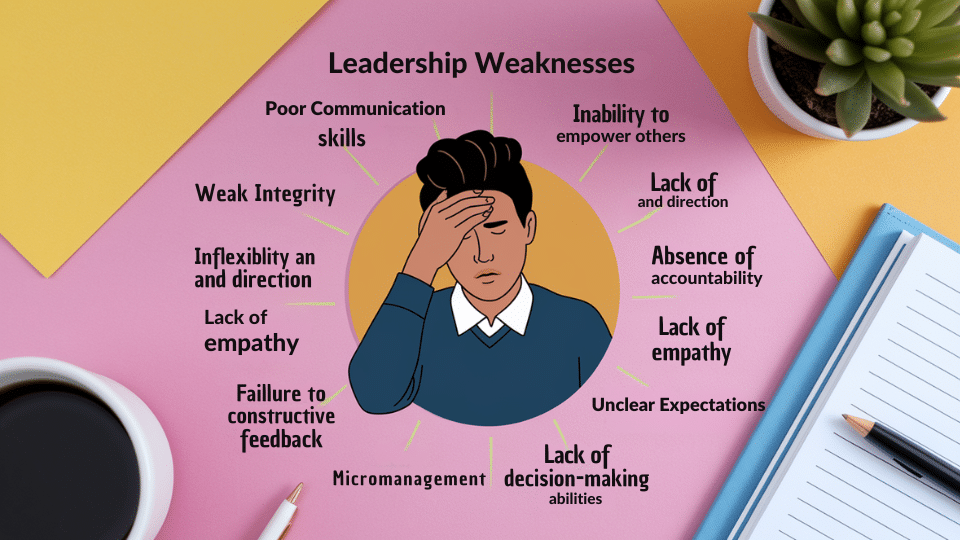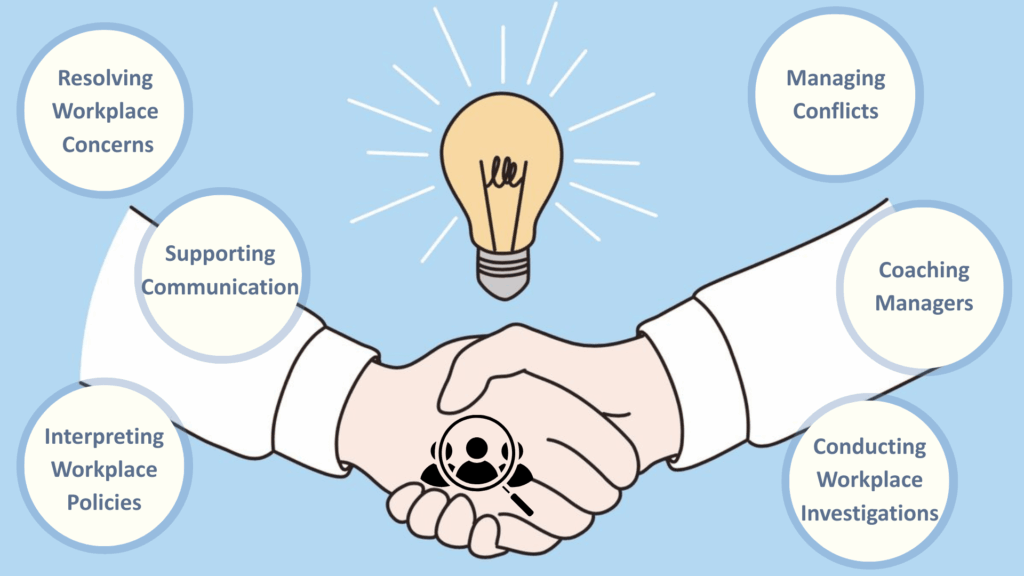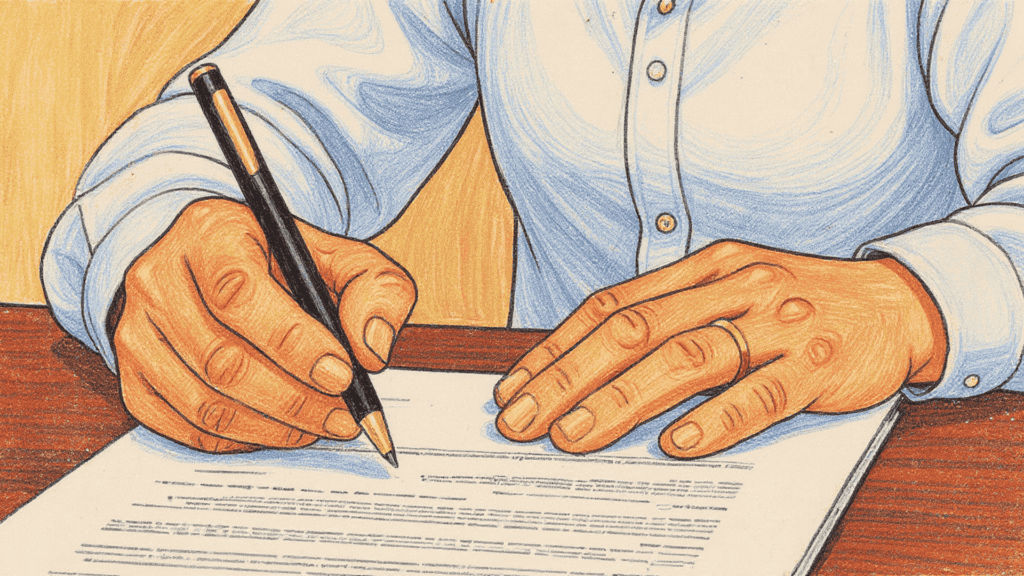Every leader, no matter how skilled, carries habits that can quietly limit their impact.
It’s not about perfection, it’s about awareness and growth.
It might be unclear communication, a tendency to micromanage, or hesitation when decisions need to be made.
These traits often creep in unnoticed, but over time, they can slow progress and drain team morale.
Recognizing these challenges is not a sign of failure; it’s a step toward genuine strength.
Here, I have mentioned the 15 most common leadership weaknesses that affect modern workplaces and explained how to turn each into a tool for growth.
By the end, you’ll not only lead more effectively but also earn deeper respect and trust from your team.
Efficient leadership also deals in labor management. Starts with the right tools. Learn how a Labor Management System (LMS) can improve employee productivity and streamline operations.
What Are Leadership Weaknesses?
Leadership weaknesses are patterns of behavior or blind spots that reduce a person’s ability to guide, inspire, or support others.
They often appear when leaders are under pressure, balancing multiple priorities, or adapting to new challenges.
A leader might struggle to communicate expectations, avoid conflict, or fail to delegate.
While these habits may seem small, their effects multiply, leading to confusion, lost motivation, and missed opportunities.
The most respected leaders are those who recognize where they fall short, listen to feedback, and make consistent efforts to improve.
15 Common Leadership Weaknesses to Improve

1. Poor Communication
Communication is the heartbeat of leadership.
When it breaks down, even the best ideas fail to reach their full potential.
Poor communication can look like vague directions, inconsistent updates, or unclear goals. It leaves employees unsure about what’s expected, creating unnecessary stress.
How to improve:
Practice active listening and give precise updates. Ask open questions to confirm understanding.Instead of assuming your message landed, check if your team feels clear and confident about the next steps.
2. Micromanagement
Micromanaging might stem from a desire for control or fear of mistakes, but it signals a lack of trust.
It prevents employees from developing independence and creativity, creating an environment where people feel watched rather than supported.
How to improve:
Focus on outcomes, not every detail. Define clear goals, set deadlines, and let your team find their own rhythm.When you step back, you give others the chance to shine and often, they’ll exceed your expectations.
3. Poor Delegation
Leaders who avoid delegation often feel they’re protecting quality, but they end up overwhelmed and unproductive.
This also robs their teams of valuable growth experiences.
How to improve:
Assign tasks based on individual strengths and make expectations specific.Offer guidance when needed, but avoid hovering. Delegation is an act of trust that shows your belief in your team’s potential.
4. Unclear Expectations
Without clear direction, even talented employees struggle.
Projects slow down, deadlines stretch, and tension builds. Unclear expectations make people hesitant to act, fearing they’ll make the wrong move.
How to improve:
Define goals upfront. Break complex assignments into smaller milestones and communicate progress points.Regular check-ins help realign efforts before confusion turns into delay.
5. Lack of Empathy
Empathy helps leaders understand how decisions affect people beyond the task list.
Without it, a workplace can feel cold and transactional. Employees might feel unseen, which reduces engagement and creativity.
How to improve:
Pay attention to emotional cues and ask how changes impact your team. Show appreciation for personal effort, especially during high-pressure times.Empathetic leaders foster loyalty and stronger teamwork.
6. Weak Integrity
Integrity builds trust faster than any motivational speech.
When a leader’s words don’t align with their actions, such as taking credit, bending rules, or showing bias, credibility fades.
How to improve:
Keep promises and own your decisions, even when they’re unpopular.Integrity is visible through consistency. Teams trust leaders who are honest and dependable, not flawless.
7. Ineffective Feedback
Feedback drives improvement, but poorly delivered feedback can crush motivation.
Some leaders sugarcoat too much, while others criticize without guidance. Both extremes create confusion instead of growth.
How to improve:
Be specific and balanced. Pair critiques with actionable suggestions.Frame feedback as collaboration, not judgment, so employees feel motivated to improve rather than defeated.
8. Low Emotional Awareness
Emotional awareness helps leaders manage stress, read situations accurately, and respond calmly.
Without it, frustration leaks into conversations, and small issues become bigger than they need to be.
How to improve:
Take note of emotional triggers during your day. Before reacting, pause to think about the bigger picture.This small moment of reflection often prevents conflict and promotes understanding.
9. Avoiding Accountability
Dodging responsibility erodes credibility fast.
When leaders shift blame, they teach their teams that accountability isn’t important. Over time, that weakens discipline and team spirit.
How to improve:
Admit when things go wrong and share what you’ll do differently next time.Accountability doesn’t make you look weak; it builds respect. Employees appreciate honesty and learn to mirror it.
10. Tunnel Vision
Tunnel vision happens when leaders become so focused on one idea or problem that they miss the wider impact of their actions.
Innovation and adaptability suffer when curiosity fades.
How to improve:
Step back regularly and ask others for their opinions.Diverse viewpoints reveal blind spots and help you see beyond your own assumptions. Balance focus with flexibility.
11. Being Overly Critical
Constructive feedback helps teams grow, but constant criticism drains energy and enthusiasm.
When every flaw is magnified, people stop taking initiative and begin to doubt their abilities.
How to improve:
Acknowledge what’s working before pointing out what’s not. Use encouragement to guide improvement.When people feel appreciated, they’re more open to learning.
12. Avoiding Conflict
Conflict avoidance may seem like keeping the peace, but it often builds quiet tension.
Problems fester, and misunderstandings multiply. Teams need open conversations to solve real issues.
How to improve:
Address concerns quickly and respectfully. Encourage calm discussions focused on finding solutions, not blame.A leader who handles conflict directly earns trust and prevents long-term resentment.
13. Favoritism
Favoritism divides teams faster than any policy change. It breeds resentment, lowers motivation, and creates unnecessary competition.
How to improve:
Base praise, promotions, and opportunities on performance, not personality.Keep evaluations transparent so everyone understands what success looks like.
14. Fear of Failure
A leader afraid to make mistakes plays it too safe. This mindset stalls innovation and prevents teams from exploring new possibilities.
How to improve:
View setbacks as experiments that reveal new lessons.When leaders admit their own failures and share what they learned, it normalizes risk-taking and builds resilience in their teams.
15. Poor Decision-Making
Leaders who delay decisions create uncertainty, while those who act impulsively without facts risk poor outcomes. Both patterns slow progress and frustrate employees.
How to improve:
Collect enough information to make informed choices, then commit with confidence.Involve your team in discussions to build ownership and trust in your decisions.
Why Addressing Leadership Weaknesses Matters?
When leadership weaknesses go unchecked, they don’t just affect one person; they influence an entire organization.
Poor communication can delay projects, a lack of empathy can cause turnover, and low accountability can destroy morale.
Over time, these gaps shape culture more than strategy does.
Leaders who work to strengthen their weaknesses build a healthier environment.
Teams become more engaged, creative, and motivated when they see their leader improving too.
Growth is contagious; it starts at the top and spreads naturally through example.
How to Improve Leadership Weaknesses?
1. Ask for Honest Feedback: Seek input from people who see your work closely.
Their perspective can uncover habits you might miss. Create a safe space where others feel comfortable sharing the truth.
2. Build Emotional Awareness: Spend time understanding your own reactions.
Emotional steadiness helps you communicate with empathy, reduce tension, and handle stress gracefully.
3. Strengthen Communication:Be transparent about goals and challenges.
Teams appreciate clarity more than perfection. Open dialogue encourages collaboration and minimizes misunderstandings.
4. Delegate Wisely: Delegation empowers others and prevents burnout. It gives your team room to grow while freeing you to focus on strategy and problem-solving.
5. Keep Learning: Leadership isn’t static, as it evolves with every challenge. Reading, mentorship, and reflection all help you adapt and stay relevant.
Continuous learning keeps your approach flexible and forward-thinking.
Conclusion
Leadership isn’t about being flawless; it’s about staying aware, adaptable, and willing to evolve.
Every leader faces moments where communication falters, decisions weigh heavily, or trust feels uncertain.
What truly defines great leadership is how those moments are handled.
By recognizing and improving your weaknesses, you show strength, not vulnerability.
Each effort, whether it’s becoming a better listener, giving clearer feedback, or handling conflict with patience, moves you closer to authentic leadership.
The path never really ends, and that’s what makes it meaningful.
When you grow, your team grows too, and together, you create a culture built on honesty, respect, and steady progress.










